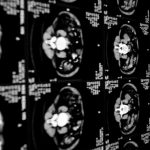What is follow-up?
Care for individuals with brain tumor doesn’t end when treatment ends. Follow-up care helps physicians keep on checking to ensure the tumor has not returned, or to deal with any symptoms, and screen the general health of patients.

The care therapy may consist of standard physical examinations, restorative tests, or both. Specialists need to monitor the recuperation in the months and years ahead.
Watching out for recurrence
One objective of follow-up care is to check for a recurrence. A tumor may recur since small portions of tumor cells may stay undetected in the body. After some time, these cells may divide in number until the point they appear on test outcomes or indicate a relapse.
During follow-up care, a specialist acquainted with the medical history can advise a customized follow-up plan in case of a return. A few people may have blood tests or imaging tests done as a component of ordinary follow-up consideration, however testing proposals rely upon a few elements including the type and grade of tumor initially analyzed and the kinds of treatment given.
Many brain tumors may relapse. Therefore, doctors prescribe regular MRI checks.
Alternatives for rehabilitative treatment include:
- Language instruction
- Word related treatment
- Counselling
- Medication to reduce fatigue and upgrade memory
The objective of palliative care is to enable individuals to regain health. This is so they stay as free from pain and suffering.
Keeping personal health records
A treatment synopsis helps build a survivorship care plan when treatment is finished. A few survivors follow up with one oncologist, while others fall back on the care of their family specialist. This choice depends on a few variables, including the type and grade of tumor, reactions, medical coverage rules, and personal preference.
It is vital to share the treatment and survivorship care plan with any specialist who is reviewing the case for the first time. These are important pointers for future reference.



